Great work Uwe,
Were there no horizontal dowels in the top part of the stairs for holding your hands when climbing up?
Were there no horizontal dowels in the top part of the stairs for holding your hands when climbing up?
 |
As a way to introduce our brass coins to the community, we will raffle off a free coin during the month of August. Follow link ABOVE for instructions for entering. |
 |
 |
The beloved Ships in Scale Magazine is back and charting a new course for 2026! Discover new skills, new techniques, and new inspirations in every issue. NOTE THAT OUR FIRST ISSUE WILL BE JAN/FEB 2026 |
 |
Hallo Maarten,Great work Uwe,
Were there no horizontal dowels in the top part of the stairs for holding your hands when climbing up?
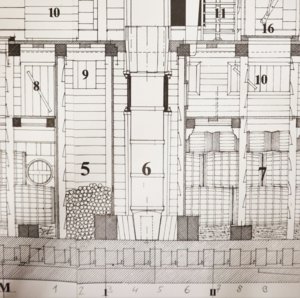
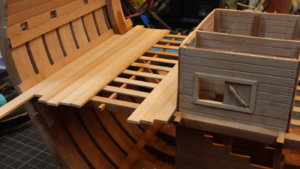
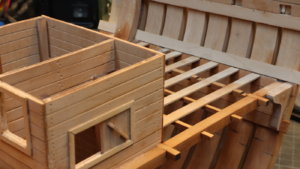
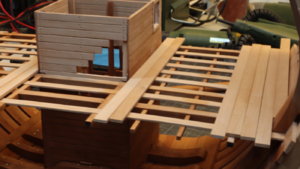
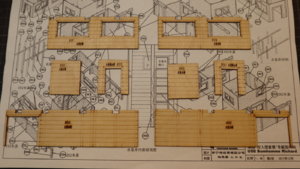
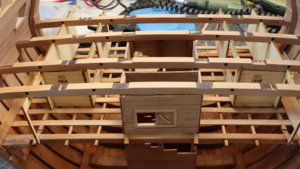
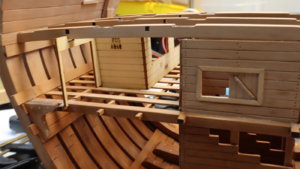
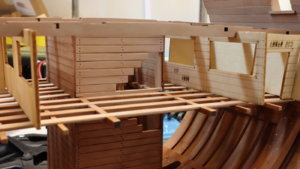
Hallo Maarten,
many thanks for your comment and your interest.
I do not think, that this was really necessary..... for climbing up and down, the sailors hat to grasp around the pillar - like a monkey climbing up a palm tree
And also no are shown in Boudriots drawings - check out the excerpt - horizontal dowels would be visible with a small circle in this view
View attachment 133913
Gents,Hallo Maarten,
many thanks for your comment and your interest.
I do not think, that this was really necessary..... for climbing up and down, the sailors hat to grasp around the pillar - like a monkey climbing up a palm tree
And also no are shown in Boudriots drawings - check out the excerpt - horizontal dowels would be visible with a small circle in this view
View attachment 133913
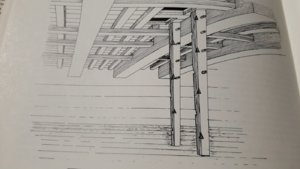
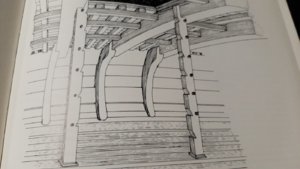
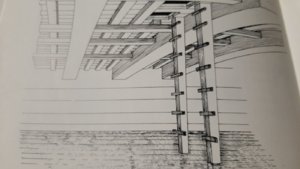
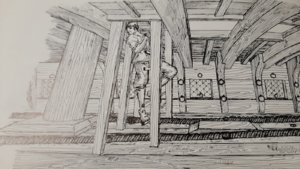
Many thanks Maarten for the insight of the danish way - would be one possibility, but I guess it was with the french ships like Nigel mentioned, a small 3 or 5 cm deep rebate at the back side on each side, would do the job - which I made off course in scale 1:48Gents,
I would agree with you on this if the pillars are free standing, but the one in the shot locker and pump well are against a wall so you cant grasp around.
If the space is narrow enough like at the pumpwell you could maybe press your back against the mast but the shotlocker is a deathtrap like this..
See below some dutch design that were used for these.
View attachment 134590View attachment 134591View attachment 134592View attachment 134593
Maybe gerard has some clarification on this.
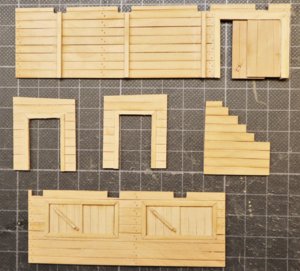
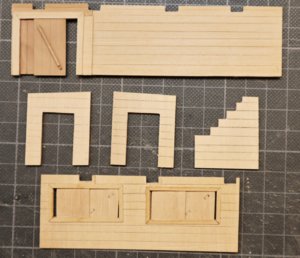
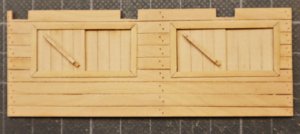
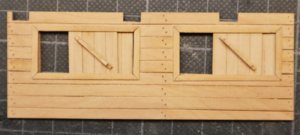
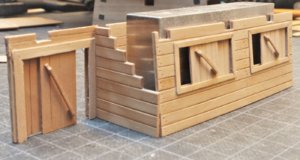
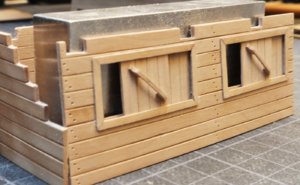
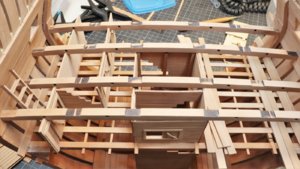
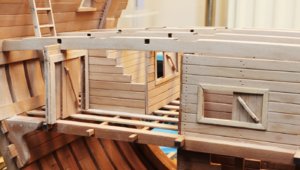
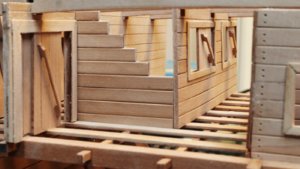
 Did you use a sanding stick to bevel the plank edges?
Did you use a sanding stick to bevel the plank edges?Hallo Nigel, thanks for the kind words - and - yes, I am trimming both longitudinal edges of the planks with a sanding block, in order to highlight the single planks.Very nice work indeed UweDid you use a sanding stick to bevel the plank edges?
Kind Regards
Nigel
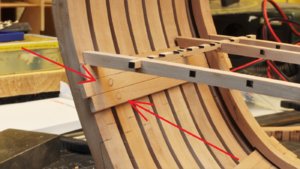
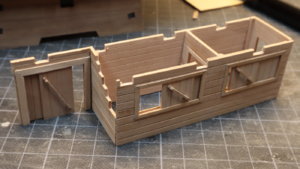
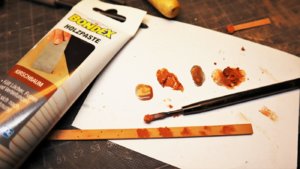
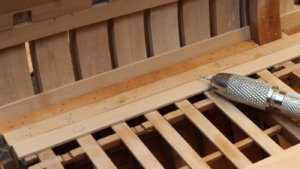
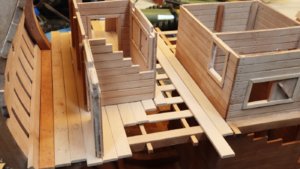
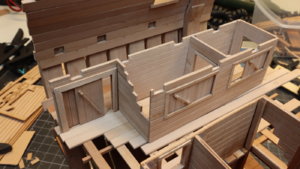


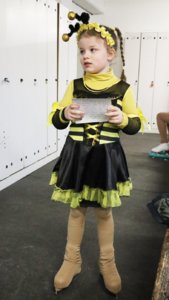



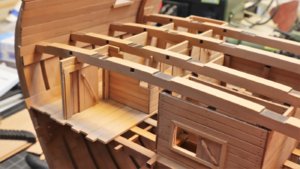
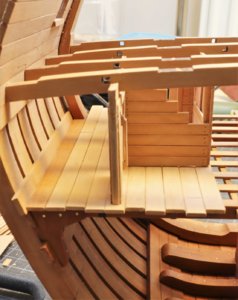
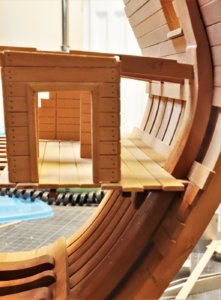
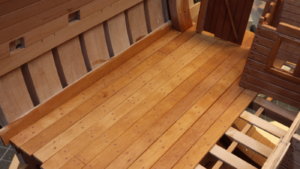
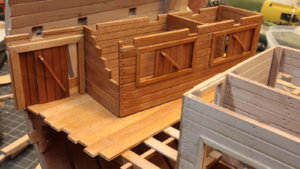
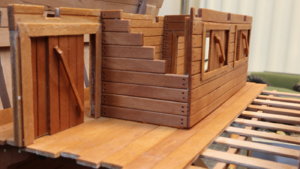
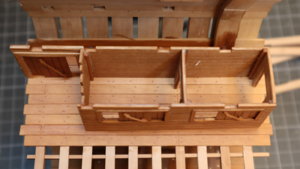
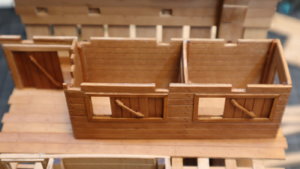

Hallo Oliver, first of all many thanks for your kind comment, especially for the Biene MayaLooks very good. The Biene Maya as well
Which Oil do you use here ? All parts has the same oil coating ?
One member here use a tape to pretect the wood from the paste. But i don´t know more who.
First the tape, than drill and the paste.
The deck planks are in principle of the same color - yesterday I did not realize it looking at the model directly, but with your comment, looking at the close-up photos -> the color difference is really visible!Hello Uwe, I kinda come to the same question as Oliver. Some timbers are darker than others (at least it is the appearance of it). I know, Pear wood can be of different colors. Is this the case, or you simply use various oils? Also, I have noticed, there are no caulking imitation on the lower deck. They are not necessary simply because didn't expose to various weather condition or?


